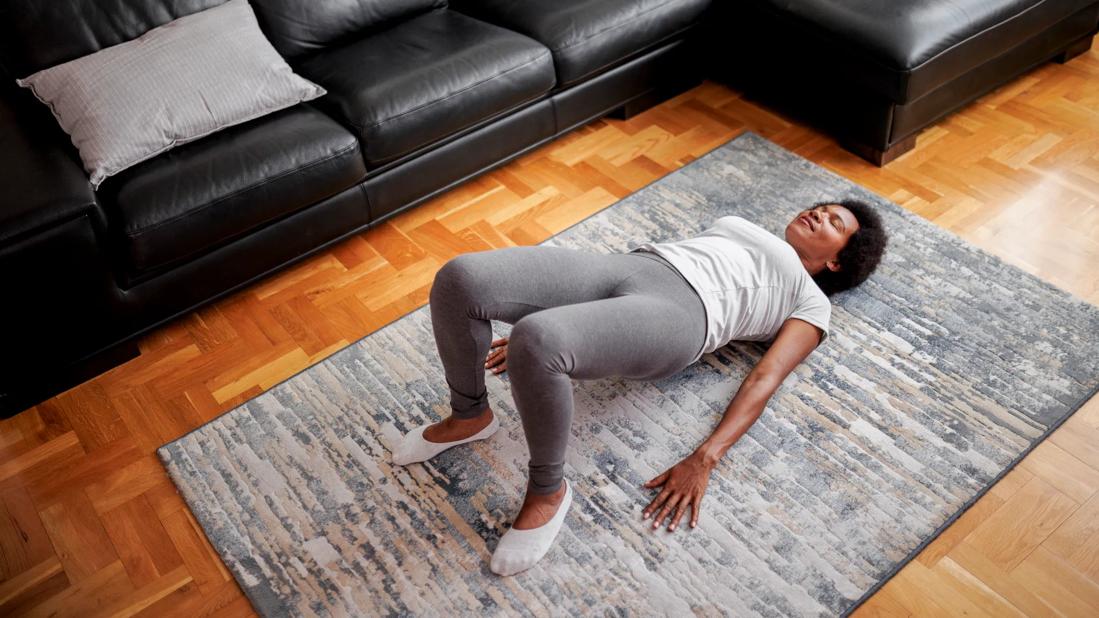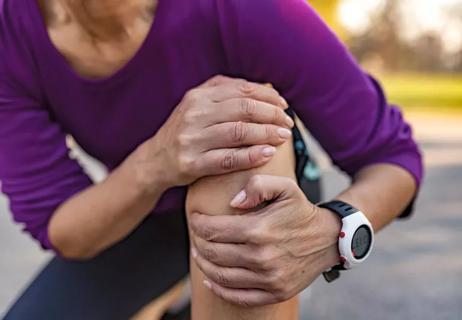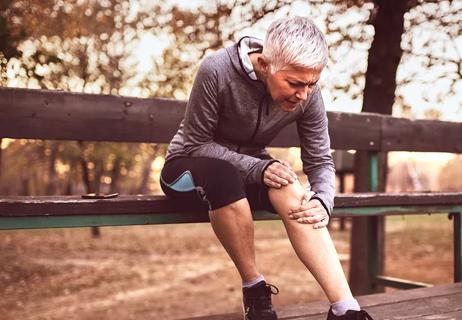Arthritic knees can benefit from bridging, mini squats, balancing exercises and other stretches

Standing on your feet all day. Climbing stairs. Squatting down to pick up your child or move a heavy object. Anything that involves straightening, bending or stretching your knees and legs can cause pain and other complications if you have knee arthritis.
Advertisement
Cleveland Clinic is a non-profit academic medical center. Advertising on our site helps support our mission. We do not endorse non-Cleveland Clinic products or services. Policy
“For people who come to see us with a diagnosis of knee arthritis, their biggest challenge tends to be pain, and that pain limits their activity when they’re on their feet,” says physical therapist Tim Bungo, PT, SCS. “Sometimes, it affects their ability to tolerate exercise, standing for any length of time and walking on stairs.”
Fortunately, there are exercises and stretches you can do to help strengthen your quads, thighs and gluteal muscles — all of which support your ability to extend or straighten your knees so you can do everyday things like stand up from a seated position.
“Anytime you have a joint that’s arthritic or a joint that’s injured in any way, it can have a potential negative effect on other areas of your body,” explains Bungo. “Sometimes, you end up compensating for that injury without even realizing it, and it might affect the opposite side because you tend to use that side to favor the arthritic side.”
To avoid further injury and reduce the amount of pain associated with knee arthritis, you’ll want to exercise carefully and in a way that doesn’t aggravate the condition.
“If you’ve been diagnosed with knee arthritis, you want to avoid impact activities like running, jumping and high-impact aerobics, along with lunging and deep squats,” warns Bungo. “These could aggravate your symptoms and make you feel worse.”
Advertisement
Building a routine around the following 20 exercises could be more helpful.
Advertisement
Advertisement
If you prefer exercising at a gym, there are several machine exercises you may find helpful, including:
Alternatively, low-impact exercises like swimming and water aerobics, brisk walking, cycling or yoga can also help strengthen your legs and hips and improve your flexibility over time.
Advertisement
“With water exercises, the buoyancy of the water helps to unload your joints, but you can still get some good resistance from a strength standpoint, working against the resistance of the water,” Bungo explains.
Exercise can take some time to get used to.
“These exercises might be a little bit painful, but when you’re done with your workout, you shouldn’t feel worse as a result of going through the exercises,” notes Bungo. “You should feel like you did something. You might feel fatigued or a little bit tired, but you shouldn’t have a significant increase in pain.”
If you do have an increase in pain or feel your condition has worsened and it doesn’t get better with rest or recovery, make an appointment with a physical therapist or primary care provider. They can take a look at what’s causing your pain and help you find relief.
“Often, you might experience more pain if you’re doing too many reps, too many sets or one of these exercises is just not right for you at the time,” shares Bungo. “We can certainly help with all of those things.”
Learn more about our editorial process.
Advertisement

Your knees could be hurting at bedtime because of inflammation, injury or some other condition that gets worse with pressure and positioning

Work on building strength and flexibility to keep the joints moving

Don't let these aches and pains set you back

Consider these common reasons for knee pain

Understanding your options

After knee arthroplasty, swelling-related pain is common, but infection and blood clots are also risks

You can improve your athletic performance over time by breaking up your workout regimen into focused cycles

Physical activity can help preserve and improve your cognitive function and fend off dementia, stroke and other health concerns

Start having sex about 72 hours before ovulation, then at least every other day during your fertile window

Attachment theory suggests that your earliest relationships shape connections throughout your life

It isn’t a recognized mental health disorder, but research shows that problematic social media use can negatively affect your mental health, self-esteem and sleep